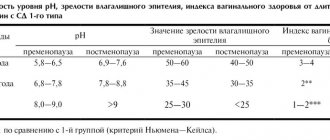Detailed description of the study
Aspartate aminotransferase (AST) is an enzyme involved in the metabolism of amino acids, which is found in the highest concentration inside the cells of the liver, heart, skeletal muscles, kidneys, and pancreas.
In a healthy person, AST is detected in the blood in a small concentration. In the event of cell destruction, this enzyme is released from them and enters the bloodstream. AST activity in the blood increases, the degree of increase reflects damage to organs and tissues.
About 90% of the causes of increased AST activity in the blood are heart and liver diseases. Among cardiovascular diseases, myocardial infarction and acute heart failure lead to a significant increase in the concentration of this enzyme. Destruction of liver cells, hepatocytes, also increases AST activity in the blood. Damage to hepatocytes is caused by inflammation in the liver due to exposure to viruses, bacteria, excess alcohol or toxic substances. In addition, metabolic disorders in the liver or deterioration of its blood supply lead to an increase in the flow of AST into the blood.
To better understand the causes of organ damage, it is recommended to determine the activity of two aminotransferase enzymes in the blood - AST and ALT (alanine aminotransferase).
When the heart is damaged, AST activity predominantly increases. In acute hepatitis, on the contrary, ALT activity is higher
Your doctor may recommend taking a test to determine AST activity if you notice:
- Yellowness of the skin, whites of the eyes;
- Darkening of urine;
- Discoloration of stool;
- General weakness, drowsiness;
- Skin itching;
- Bloating;
- Lack of appetite;
- Increased abdominal volume in the absence of obesity;
- Swelling of the lower extremities and torso.
In preschool children and adults whose veins are difficult to access, a blood test to determine AST activity is performed from a finger prick (capillary blood).
Aspartate aminotransferase (AST) test
Table of contents
- Rules for preparing for the test
- What can affect the result?
- Analysis result
- Additional Research
- Which doctors refer you for the study?
- MEDSI cares about its patients
An aspartate aminotransferase (AST)
test is done to detect liver damage.
Biological material:
venous, capillary blood
Aspartate aminotransferase (AST) is an enzyme located in all cells of the body, but mainly in the liver and heart. Normally, its activity in the blood is very low. Indicators increase when liver or muscle tissue is damaged. In this case, AST is released into the blood.
Testing is recommended:
- To detect liver damage. The analysis is prescribed together with the study of ALT (alanine aminotransferase), which is also considered an important parameter of organ damage, or as part of a general diagnosis of the liver
- To determine the specific form of liver pathology
- To monitor the effectiveness of existing therapy
- To evaluate the health of patients who are taking drugs that are potentially toxic to the liver
It is especially important to get tested in the following cases:
- If you have symptoms of a liver disorder: fatigue and weakness, nausea and vomiting, abdominal pain, yellowing of the whites of the eyes and skin, itching, dark urine, light-colored stools
- In the presence of factors that increase the risk of developing liver diseases: previous hepatitis, alcohol abuse, hereditary predisposition, taking certain medications, diabetes, excess weight
- During the treatment of identified diseases to monitor its dynamics and effectiveness of therapy
Rules for preparing for the test
- Food.
You should refuse food 12 hours before the test - Loads.
You should refrain from physical and emotional stress half an hour before the diagnosis - Smoking.
You should stop smoking at least half an hour before the test
What can affect the result?
AST levels may decrease during pregnancy.
Increasing the indicator
aspartate aminotransferase is possible with:
- intramuscular injections of drugs
- intense physical activity
- taking dietary supplements
It's important to keep in mind
that only a doctor who is aware of the medications and dietary supplements the patient is taking, as well as pregnancy and other conditions, can correctly interpret the diagnostic results. Therefore, in many cases, it is important to consult a doctor for advice before taking the test. The test result is also assessed by the doctor in comparison with the patient’s clinical picture.
If necessary, the specialist will refer the patient for other examinations. Based on the results of a comprehensive diagnosis, an accurate diagnosis will be made.
We recommend that you consult a doctor or undergo a check-up (a full examination program).
To clarify the specifics of the test or make an appointment at the clinic, just call +7 (495) 7-800-500. A specialist will answer all questions and select the optimal time for a visit. Registration and payment for services is also possible through the SmartMed application.
Analysis result
| Age/gender | Reference values |
| 0-1 year | < 58 U/l |
| 1-4 years | < 59 U/l |
| 4-7 years | < 48 U/l |
| 7-13 years | < 44 U/l |
| 13-18 years old | < 39 U/l |
| Men over 18 years old | < 40 U/l |
| Women over 18 years old | < 32 U/l |
High AST activity is observed when:
- viral infections
- taking medications that are toxic to the liver
- diseases that slow blood flow to the organ
- chronic hepatitis
- bile duct obstruction
- cirrhosis
- some types of liver cancer
- muscle damage
The rate also increases after a heart attack.
Additional Research
Additionally, the patient may be referred for tests to determine:
- Alanine aminotransferase (ALT)
- Gamma-glutamyl transpeptidase (gamma-GT)
- Serum total protein
- Serum albumin
- Alkaline total phosphatase
Which doctors refer you for the study?
The following can be referred for diagnosis: a therapist, a pediatrician, a general practitioner, a hepatologist, a gastroenterologist, a cardiologist, or a surgeon.
MEDSI cares about its patients
- Experienced specialists.
They professionally collect biological material and examine it, which guarantees diagnostic accuracy - All our clinics have created comfortable conditions for taking the test.
- The research is carried out using high-precision expert-class equipment
- There is an opportunity to undergo a comprehensive examination
To take an AST test and make an appointment with a doctor to interpret the result, as well as clarify its cost, call +7 (495) 7-800-500. Our specialist will answer all questions and suggest the optimal time to visit the clinic. Recording is also possible through the SmartMed application.
Important Notes
Material for research
Children under 7 years of age: venous blood/capillary blood (for special indications). Children over 7 years of age and adults: venous blood.
Capillary blood collection for research is carried out only for children under 7 years of age and adults whose veins are difficult to access (for special indications)!
According to GOST R 53079.4-2008, indications for taking capillary blood are possible in newborns, in patients with very small or hard-to-reach veins, with large-area burns, and in severely obese patients.
How to lower AST in the blood?
People who are looking for an answer to a similar question need to clearly understand: an increase in AST is not an independent disease and therefore there are no separate measures to reduce it!
Since this sign signals the destruction of cells containing this enzyme (heart, liver, muscles), it is necessary to diagnose and treat diseases of these organs. Only healthy tissues will be able to function normally and bring all indicators of a biochemical blood test, including AST, back to normal.
It is necessary to clearly understand that an increase in AST is not the cause of the disease. This is its consequence. Therefore, only the elimination of the causative disease can interrupt the cause-and-effect relationship, which will be reflected in the normalization of AST activity and will become a criterion for victory over this disease. Any cases of increased aspartate aminotransferase are a reason to seek specialized medical help. This harmless and asymptomatic sign often hides serious chronic diseases that will only manifest themselves after some time.
Author of the article:
Mochalov Pavel Alexandrovich |
Doctor of Medical Sciences therapist Education: Moscow Medical Institute named after. I. M. Sechenov, specialty - “General Medicine” in 1991, in 1993 “Occupational diseases”, in 1996 “Therapy”. Our authors
References
- Ivashkin, V.T., Mayevskaya, M.V., Pavlov, Ch.S. and others. Clinical recommendations of the Russian Society for the Study of the Liver for the management of adult patients with alcoholic liver disease. Russian Journal of Gastroenterology, Hepatology, Coloproctology, 2021. - V. 27(6). — P. 20-40.
- Schiff, Y.R., Sorrell, M.F., Maddray, W.S. Introduction to hepatology / ed. V.T. Ivashkina, A.O. Bueverova, M.V. Mayevskaya. - M.: GEOTAR-Media, 2011. - 704 p.
- Colombo, M. EASL clinical practice guidelines for the management of occupational liver diseases. Liver Int., 2021. - Vol. 40(1). — P. 136–141.
- Newsome, P., Cramb, R., Davison, S. et al. Guidelines on the management of abnormal liver blood tests, 2021. - Vol. 67. - P. 6-19.
Norm of AST in the blood
In order to correctly evaluate the obtained indicators of plasma enzymatic activity in relation to AST, you need to know its normal values. Most laboratories usually indicate the norm next to the result obtained. This is due to the fact that different reagents and methods can be used to determine the AST indicator. The types and standards given in the table are considered generally accepted.
| Determination method | Norm for men | Norm for women | Norm for children |
| Optical (in ME) | Up to 40-41 IU | Up to 34-35 IU | Up to 50 IU |
| Reitman-Frenkel reactions (in mcomol/(h/ml)) | 0,1-0,45 | 0,1-0,35 | 0,2-0,5 |
If a biochemical blood test yields AST values that do not exceed standard values, this indicates the normal functioning of the enzyme systems of the heart and liver and the preserved integrity of the cellular composition of these organs. If there are clinical symptoms of their damage, other specific markers (ALT, troponins, creatine phosphokinase, etc.) must be examined!
Deciphering the ALT analysis
Alanine aminotransferase reference values for adults:
| Norm in U/l | Norm in mmol/l | |
| men | 45 | 252 |
| women | 34 | ≈ 190 |
WHY IS ALT LEVEL DETERMINED?
ALT is an enzyme of the transaminase group, present in a certain amount in the cells of the liver, kidneys and cardiovascular system. Determining the concentration of this substance allows you to get an idea of the condition of the liver and heart, as well as the effectiveness and safety of the treatment. The basic indication for diagnosis is the suspicion of liver disease, cirrhosis, viral or toxic hepatitis (chronic and acute). Also, a blood test for ALT allows for the timely detection of malignant primary or secondary metastatic liver lesions.
An increase in the level of the above enzyme in various types of hepatitis manifests itself much earlier than the pathology progresses to the icteric stage. Thanks to this, it becomes possible to timely diagnose the disease at the initial stage of its development and begin treatment, which can significantly increase the survival rate of patients with this diagnosis.
The analysis is part of standard screening diagnostics, which allows for a comprehensive assessment of the patient’s liver condition. The study is also carried out as part of preparation before planned hospitalization for surgical intervention. Often the analysis is prescribed in combination with an analysis of aspartate aminotransferase levels.
To assess the health status of a patient suffering from diseases of the pancreas (diabetes, pancreatitis, etc.) and gall bladder (cholecystitis, cholelithiasis, etc.), determining the level of ALT is also necessary, as is identifying the amount of other enzymes. Diagnosis is carried out as prescribed by the attending physician, in the presence of objective indications - general weakness of unknown origin, fatigue, icteric coloration of the skin and sclera, vomiting, nausea, pain and heaviness in the abdomen and right hypochondrium.
In addition, identifying the level of this enzyme is included in the standard diagnostic protocol for diseases of the cardiovascular system, especially when examining patients with suspected myocardial infarction or myocarditis. In case of organic lesions of the heart muscle, determining the level of ALT is not of paramount importance. Diagnosis is carried out if the patient is suspected of having myositis, muscular dystrophy and pain in the heart, which cannot be explained by excessive physical activity or any other objective reason.
All donors without exception undergo diagnostic testing of ALT levels. The concentration of this enzyme is necessarily assessed in the presence of certain types of chronic pathologies and before prescribing hepatotoxic drugs (antirheumatic, anticancer, antituberculosis and antimicrobial), as well as to monitor the liver condition during their use.
Dependence of ALT level on age and other indicators
During a person's life, the level of ALaT changes. You need to know this in order to correctly decipher ALT in a biochemical blood test.
- In healthy full-term newborns, the alanine aminotransferase rate ranges from 10 to 17 U/l.
- If the baby was born prematurely, then this figure can be 13–26 U/l, and the level of this substance in the blood of such babies changes almost daily.
- From the sixth day of life to six months of age, the upper limit of alanine aminotransferase increases slightly and amounts to 30 U/l. This is explained by the fact that in the first six months all biochemical mechanisms are gradually “launched” in the baby’s body, because the child adapts to existence outside the mother’s womb.
- From seven months to a year, this figure fluctuates between 13–29 U/l. At this time, the indicators for boys and girls do not yet differ.
- From one year to 14 years, the concentration of alanine aminotransferase in boys and girls is different. Moreover, in the female body it will be lower than in the male body. For girls of preschool age, the norm will be considered a concentration of 13–18 U/l, and for boys the upper limit is already 22 U/l. This trend will continue throughout your life.
Alanine aminotransferase levels in adults
- Before reaching the age of 60, the normal alanine aminotransferase level in men is 10–45 U/L, while the normal ALT level in women during this period is only 10–31 U/L.
- The level of this substance in the blood can only change during pregnancy, and then not in all women. In some cases it remains unchanged. If the expectant mother's ALT level is slightly elevated and is 35 U/L, this is not a cause for concern. An increase in ALT during pregnancy is caused by the fact that the enlarged uterus may slightly compress the bile ducts or a slight bend has appeared in the bile ducts. There is no need to be afraid of this state of affairs - after childbirth, the uterus will shrink and the indicators will return to normal. However, if the increase in ALaT in the blood during pregnancy continues, and the concentration of this substance reaches high levels, additional examinations should be performed, as this may be associated with impaired functioning of the liver, kidneys and heart.
- When people “step over” the 60-year barrier, the level of alanine aminotransferase in the blood also changes. Normally, ALT in men of this age ranges from 10 to 40 U/l, and for females it will be 10–28 U/l. The concentration of alanine aminotransferase remains at this level until the end of life.
However, a normal blood level of this substance does not always indicate that a person is healthy. In some cases, even with severe pathology of the liver and kidneys, the indicator does not change, especially for the fairer sex. That is why an isolated study of the concentration of this enzyme in the blood is very rarely prescribed. Most often, other biochemical indicators are analyzed in parallel, which allows a much more accurate understanding of the state of the body.
4.What are the risks and what could interfere with the analysis?
What are the risks of an AST test?
If you are taking an AST test, the possible risks may only be associated with blood sampling. In particular, the appearance of bruises at the puncture site and inflammation of a vein or artery (phlebitis). Warm compresses several times a day will relieve phlebitis. If you are taking blood thinning medications, you may bleed at the puncture site.
What can interfere with the AST test?
The level of aspartate aminotransferase in the blood can change due to:
- Some medications;
- Taking vitamin A in large quantities and certain herbs (valerian and echinacea);
- Muscle injury;
- Recent cardiac catheterization or cardiac surgery.
Interpretation of the blood test for AST
The normal level of AST in the blood is very dependent on age and gender. Decoding the analysis is an acquaintance with the number of conventional units of these enzymes per 1 liter of blood - an absolute indicator.
Normal AST values in blood tests for different ages are shown in the table:
| AST is normal in newborns | 22-70 units/l |
| in children under 1 year | 15-60 units/l |
| in children under 15 years of age | 6-40 units/l |
| in adult women | up to 31 units/l |
| in adult men | up to 41 units/l |
| in the elderly (after 60 years) | 3-40 units/l |
It is worth considering that the results of a biochemical blood test for AST in different laboratories may differ from each other. This is due to the use of different equipment and reagents. The research forms must indicate what the analysis shows - these are the normative figures for each specific laboratory, this column is usually called “reference values”.
The interpretation of the AST analysis can be presented in other units of measurement; it looks something like this - 0.0425 mkat/l. This means microcatal per 1 liter of blood. It is quite simple to translate this indicator using the formula 1 unit/l = 0.0167 mkat/l.
The level of AST in the blood is significantly affected by physical activity. With an overly active lifestyle, the levels can be increased by 2 times, so athletes know firsthand what aspartate aminotransferase is. It is also worth considering that excess weight, and even more so significant obesity, can lead to an increase in the presence of enzymes by 30-50%.
If the laboratory shows a high value, then it is worth considering that this may occur due to the destruction of red blood cells that contain this enzyme. A high AST reading in such a pathology is considered false and has no diagnostic value. AST analysis is also not prescribed during dialysis, since such a procedure artificially lowers the indicator.
3.How to prepare and how is the analysis carried out?
How to prepare for the AST test?
Tell your doctor if you:
- Are you taking any medications, including traditional medicine? Many things can affect AST levels in the blood, even valerian;
- You are allergic to anything;
- Are pregnant or think you may be pregnant.
How is an AST test performed?
An AST test is performed after taking blood from a vein. Blood sampling is carried out according to a standard procedure.
About our clinic Chistye Prudy metro station Medintercom page!
2.Why is AST analysis performed?
Content of aspartate aminotransferase in the blood:
- Helps assess liver damage;
- Helps diagnose liver diseases, especially hepatitis and cirrhosis. Liver disease is accompanied by symptoms such as pain in the upper abdomen, nausea, vomiting and, sometimes, jaundice;
- Allows you to check the progress of treatment of liver diseases;
- Helps to find out the cause of jaundice - liver or blood disease;
- Allows you to monitor the effect of cholesterol-lowering drugs, as well as other drugs that can damage the liver.
Visit our Hepatology page






